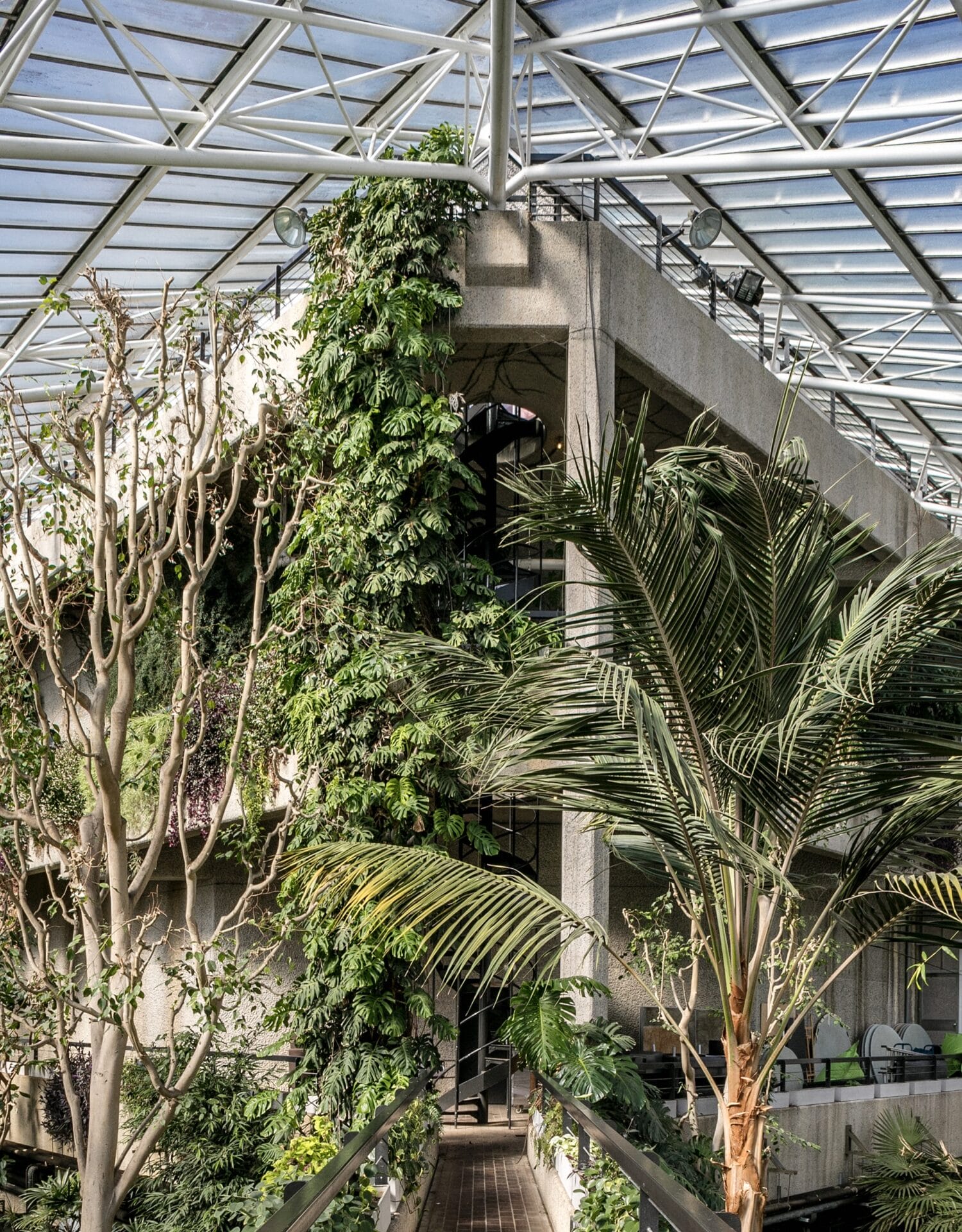This post was originally published on Colossal
The Barbican Conservatory, London, United Kingdom. Architect: Chamberlin, Powell and Bon. Photo © Taran Wilkhu. All images courtesy of Olivia Broome and Hoxton Mini Press
In the mid-20th century, during reconstruction following World War II, an architectural style emerged in the U.K. and Europe that favored bare, industrial building materials, a monochrome palette, and angular geometry. Both iconic and divisive, the hulking, concrete facades can be seen in the likes of London’s Barbican Centre or the National Theatre. In the U.S., think of Boston City Hall or Met Breuer. These stalwart structures represented modernity, resilience, and strength, serving as civic hubs and governmental centers—the opposite of “soft around the edges.”
That’s where Olivia Broome’s project Brutalist Plants comes in, a repository of photographs featuring gardens and greenery around these iconic buildings, which she has collected on her Instagram since 2018. An eponymous forthcoming book, published by Hoxton Mini Press, showcases some of the most impressive examples that she has collected over time, focusing on incredible pairings and contrasts between architecture and foliage.
“I find it fascinating how much any space can be improved by some plants or greenery,” Broome tells Colossal. “There’s something so pleasing about grey and green, as anyone with some houseplants in their flat can agree with! For me, brutalism gives off such a strong presence when you’re near it, and nature softens that right down.”
Brutalist Plants emerged from a community-led collaboration, as Broome collects and showcases other photographers’ images. She enlisted her father, who is also a fan of photography, to help whittle down the more than 300 images in the project’s Instagram feed to create a selection for the book—ten of which made the final cut. “Something I’m proud of is that images from 41 different countries feature in the book,” she says. “I really wanted to make it as international as possible, so I hope there’s something for everyone.”
Brutalist Plants is out in the U.K. this month, and you can preorder your copy on Hoxton Mini Press’s website. The book’s U.S. release is scheduled for September.

Reinforced hillside, Aogashima, Tokyo, Japan. Photo © Yasushi Okano

Artwork and photo by Karsten Födinger in La Vallée, Basse-Normandie, France

Left: Monument to the Revolution, Kozara National Park, Prijedor, Bosnia and Herzegovina. Architect: Dušan Džamonja. Photo © Alexey Bokov. Right: Casa de Vidro, São Paulo, Brazil. Architect: Lina Bo Bardi. Photo © Celeste Asfour

Jurong Bird Park, Jurong, Singapore. Architect: John Yealland and J. Toovey. Photo © James Wong

Evangelische Friedenskirche (Peace Church), Monheim-Baumberg, Germany. Architect: Walter Maria Förderer. Photo © Bildarchiv Monheim GmbH / Alamy Stock Photo

Left: Bucharest, Romania. Photo © Bogdan Anghel. Right: Casa Alférez, Cañada De Alferes, Mexico. Architect: Ludwig Godefroy. Photo © Rory Gardiner

Les Étoiles d’Ivry, Paris, France. Architect: Jean Renaudie. Photo © pp1 / Shutterstock

The abandoned Haludovo Palace Hotel, Krk Island, Croatia. Architect: Boris Magaš. Photo © Maciek Leszczelowski

Do stories and artists like this matter to you? Become a Colossal Member today and support independent arts publishing for as little as $5 per month. The article Photos from 41 Countries Juxtapose Blocky Architecture and Verdant Gardens in ‘Brutalist Plants’ appeared first on Colossal.




0 Comments